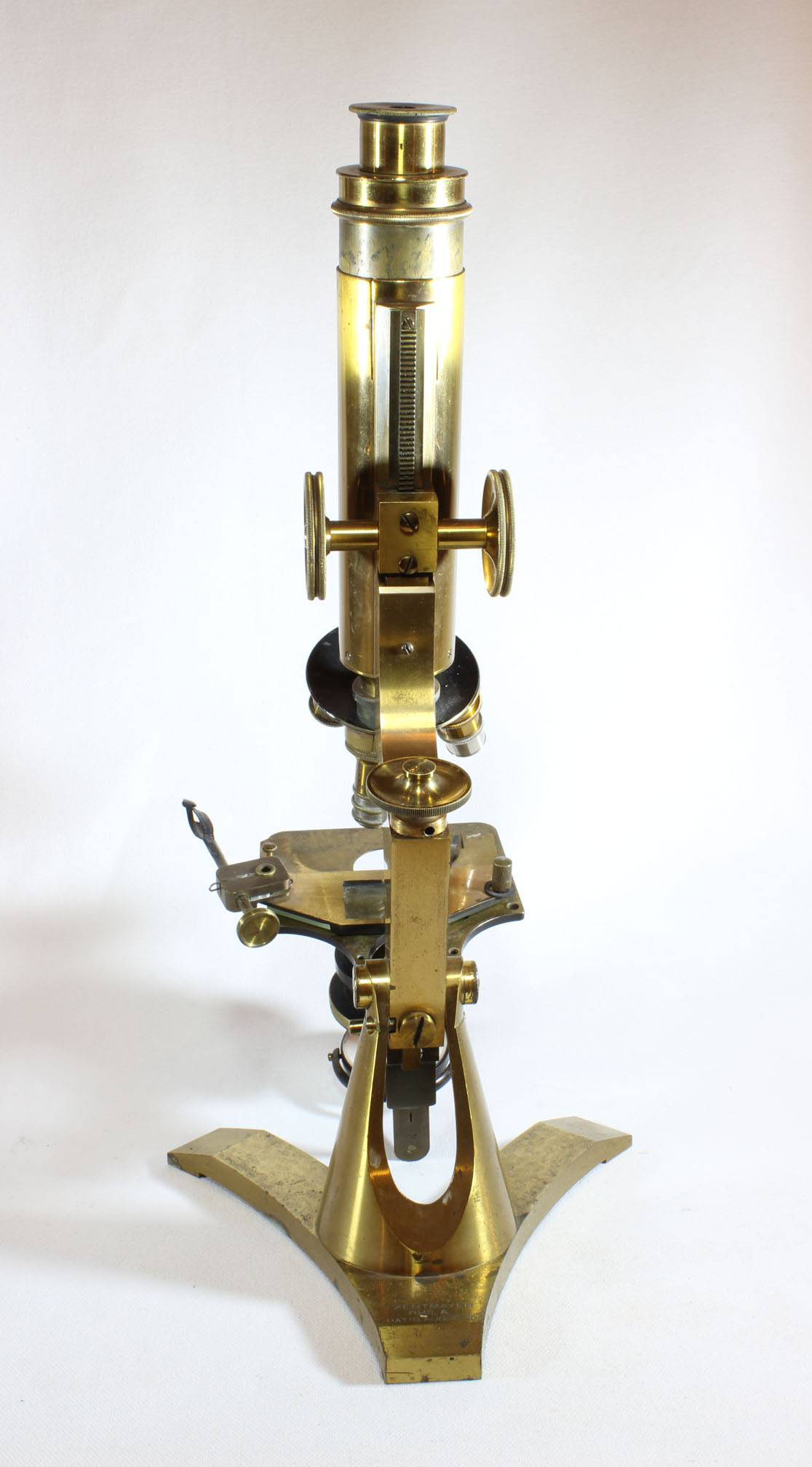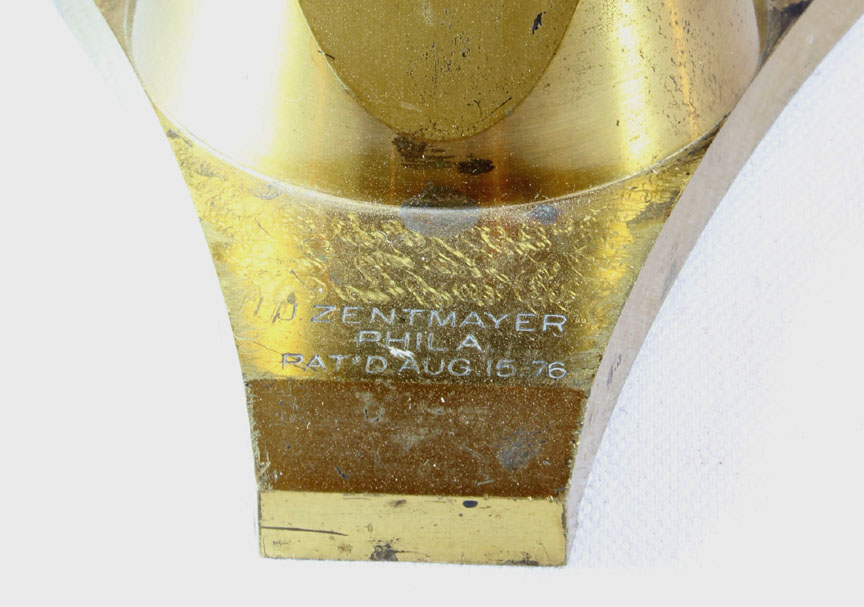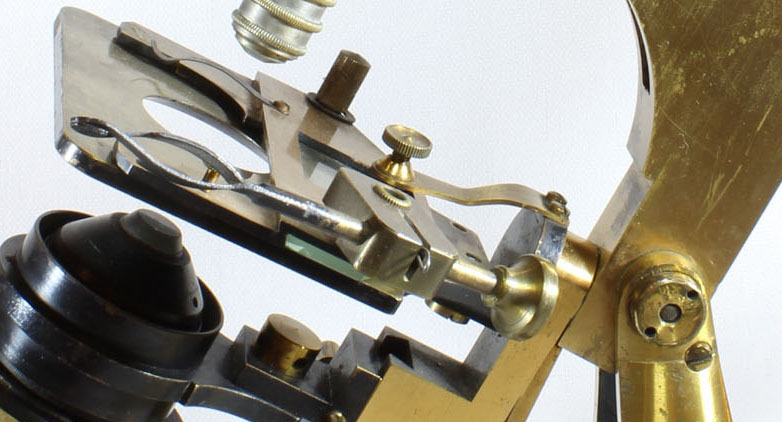MICROSCOPE-ANTIQUES.COM © 2013-25.
AMERICAN COLUMBIAN MICROSCOPE:
1897
Signed on the foot: 'J.ZENTMAYER PHILA, PAT. AUG
15 76'
Serial Number:None
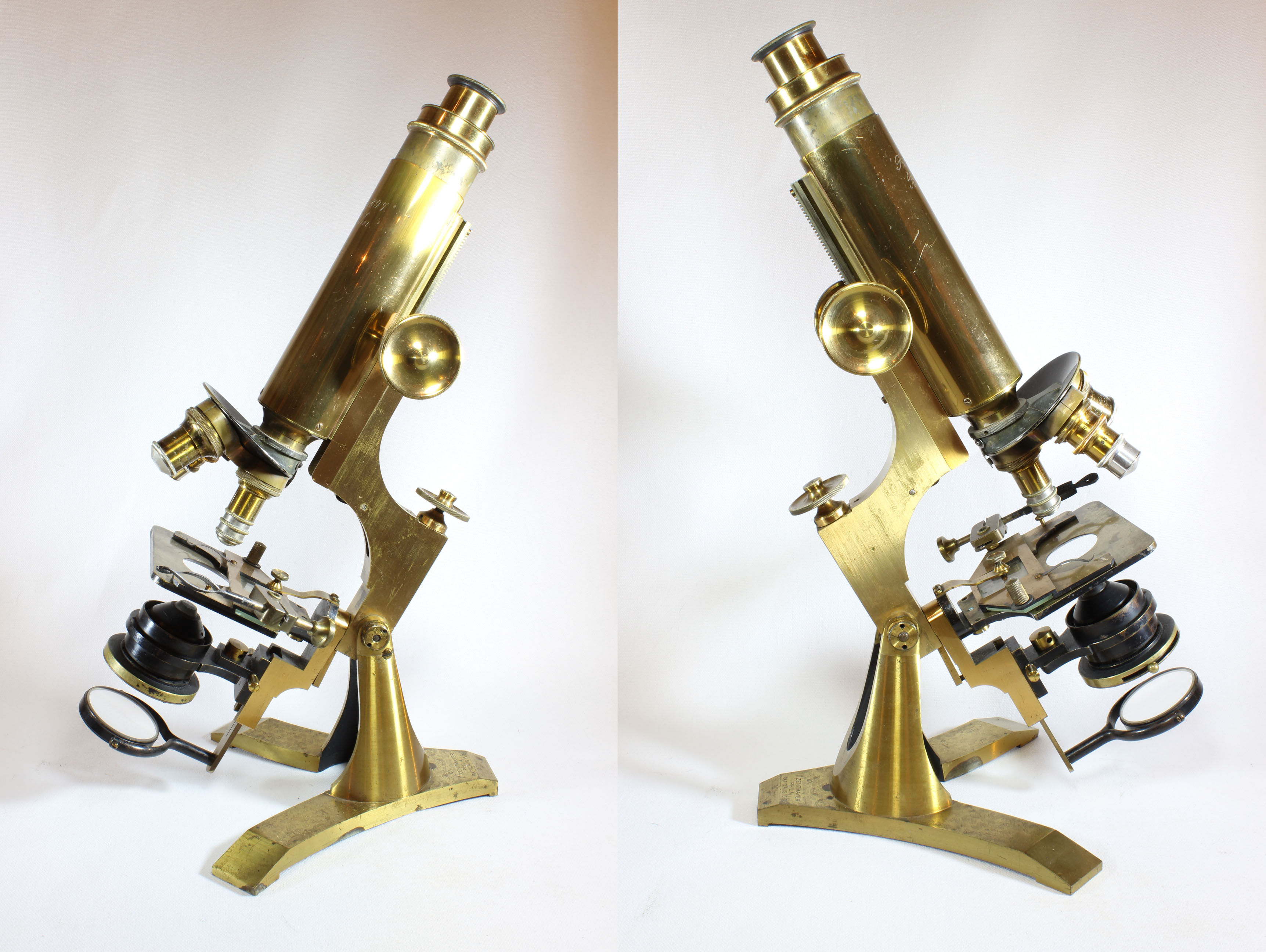
Please Click on the Images for a Larger Version, where available
DESCRIPTION:
This microscope has several unique features. It arises on a
Y-staped foot with a hollow conical support which provides a uniquely stable support in vertical, inclined, and even horizontal positions but with less weight than many other equally stable designs. It is signed on the foot J.ZENTMAYER PHILA, PAT. AUG 15 76
without a serial number. It is engraved on the front of the main optical tube Prize 1897, B Kohn
. The stage is a standard Zentmayer gliding stage, but with a permanent stage forceps attached to one of the handles. This well-made addition includes an alligator clip
frequently used in electical work and has the labelling of Mueller Elec. Co.
Cleveland O. U.S.A.
There were three objectives on a triple
nosepiece. These include:
- Bausch & Lomb Optical, Rochester N.Y. 2/3 tube
length 160 (engraved in OLD ENGLISH)
- SPENCER LENS CO. 67286, HOMOG. IMMER. 1.8 MM N.A. 1.30 95X
- An objective marked only with a tiny hand-scratched capital
L on the blackened end.
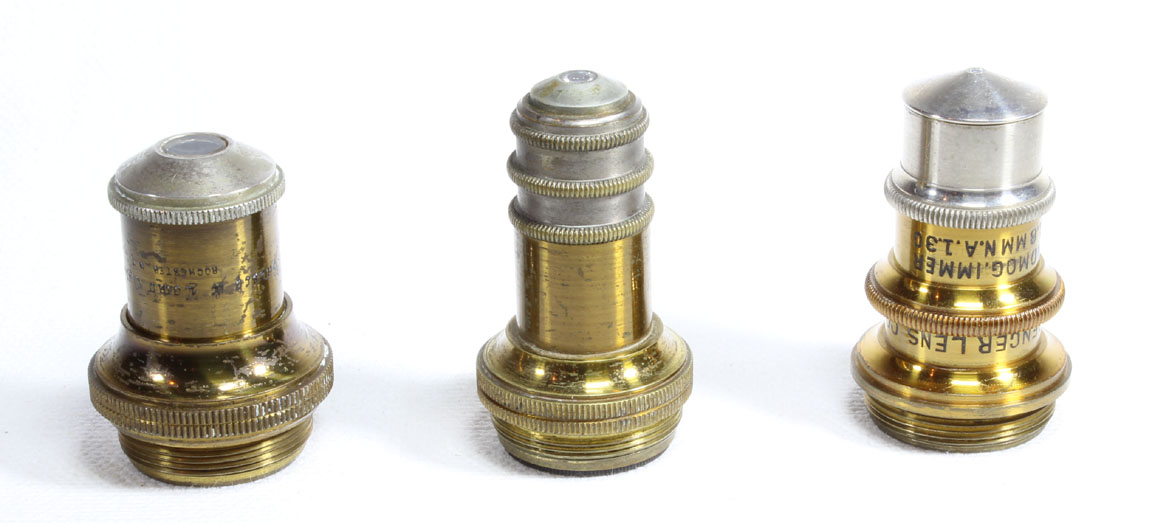
Coarse focus is by straight-toothed rack and pinion, fine is the patented Zentmayer long lever. The Zentmayer swinging tailpiece allows the substage to slide up or down on it, and the mirror has up or down movement via its support which rides inside the tailpiece.
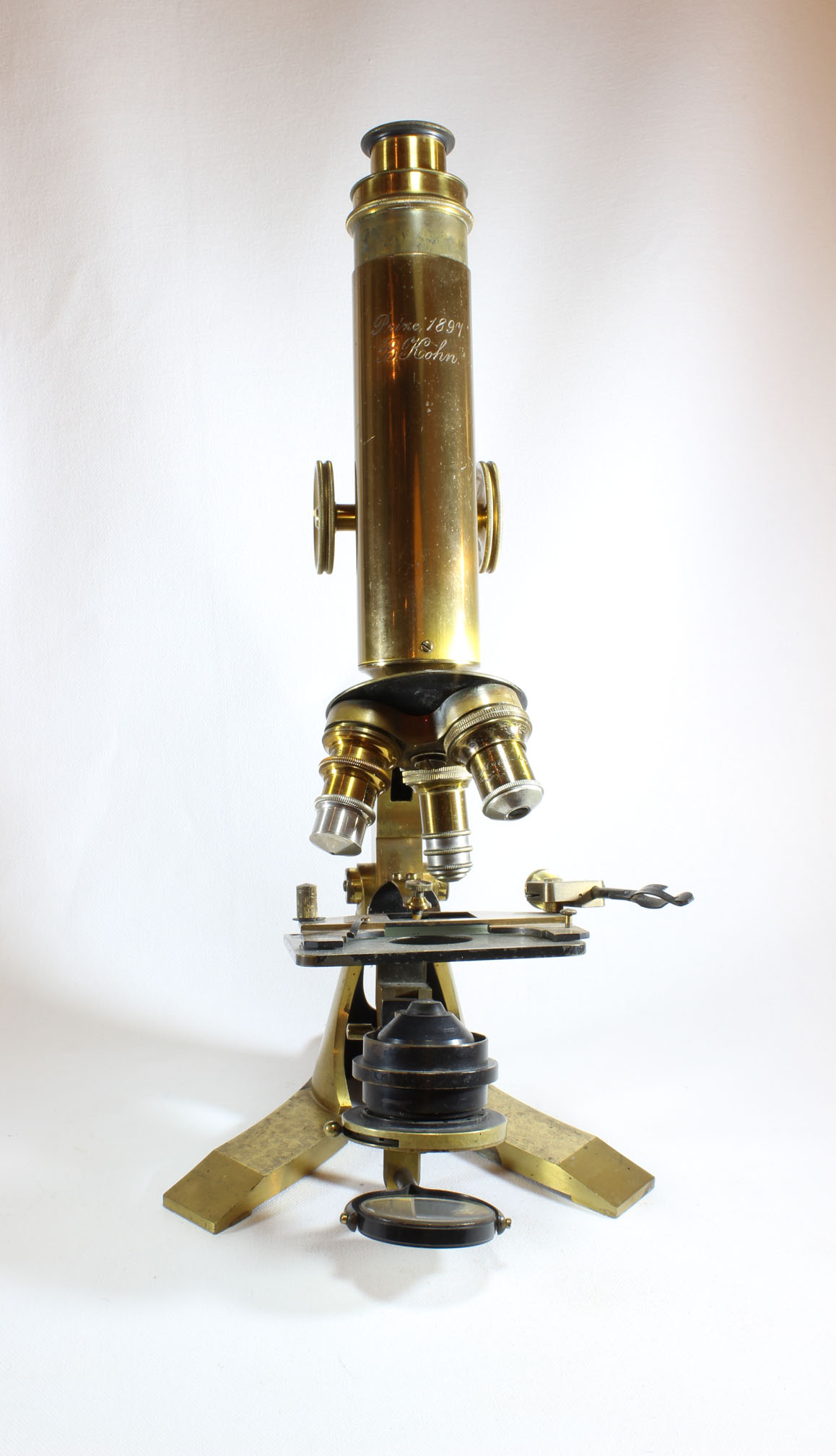
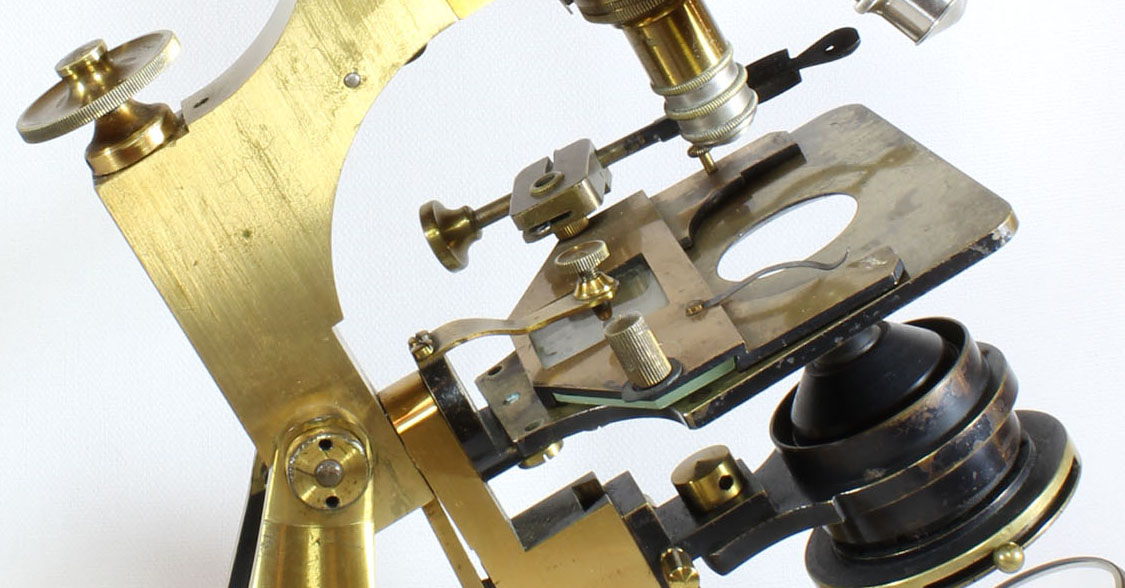
HISTORY OF JOSEPH ZENTMAYER AND HIS AMERICAN HISTOLOGICAL
AND AMERICAN COLUMBIAN
STANDS
Joseph Zentmayer is one of the great names in microscopes not
only in America, but worldwide. His inventions included his improvement in the swinging
substage which has its axis of rotation centered at the stage, the gliding stage(found on his Grand
American Microscope, a
unique form of variable
diameter diaphragm, and a long lever type of fine adjustment. He was also the first to make a centerable substage that could be centered for high powered objectives. This is found on his 'Grand American' where the adjustments are made by slotted screws. Bulloch later changed the plan from screws to milled knobs. Zentmayer's swinging substage design was incorporated into the microscopes of many other makers of his day including Ross who termed them the Ross-Zentmayer Model.
The Zentmayer swinging substage became standard equipment on microscopes by
nearly all the major manufacturers of the day. It led to even more extreme concoctions to achieve even more oblique illumination. The unique form of the American Histological,
first patented in 1876, was very popular and later led to the (American Columbian) stand starting about 1893. This certainly correlates with the engraved 1897 date on the microscope featured at the top of this page.
Changes in the Columbian as compared to the American Histological, are relatively minor, at least externally. Shown below are engravings to compare, as well as examples of each. These changes are indicated by red arrows in the engravings as follows:
A- The nut under the fine focus on the earlier histological stand was cone-shaped. In the Columbian model, the nut was a capstan type that could be more easily adjusted using a tommy bar
.
B- Most notable was the height of the support cone which was higher on the newer Columbian model, allowing the use of a longer tailpiece.
C- The longer tailpiece is pictured in the 1899 Catalog engraving, but interestingly, my example still had the older shorter tailpiece.

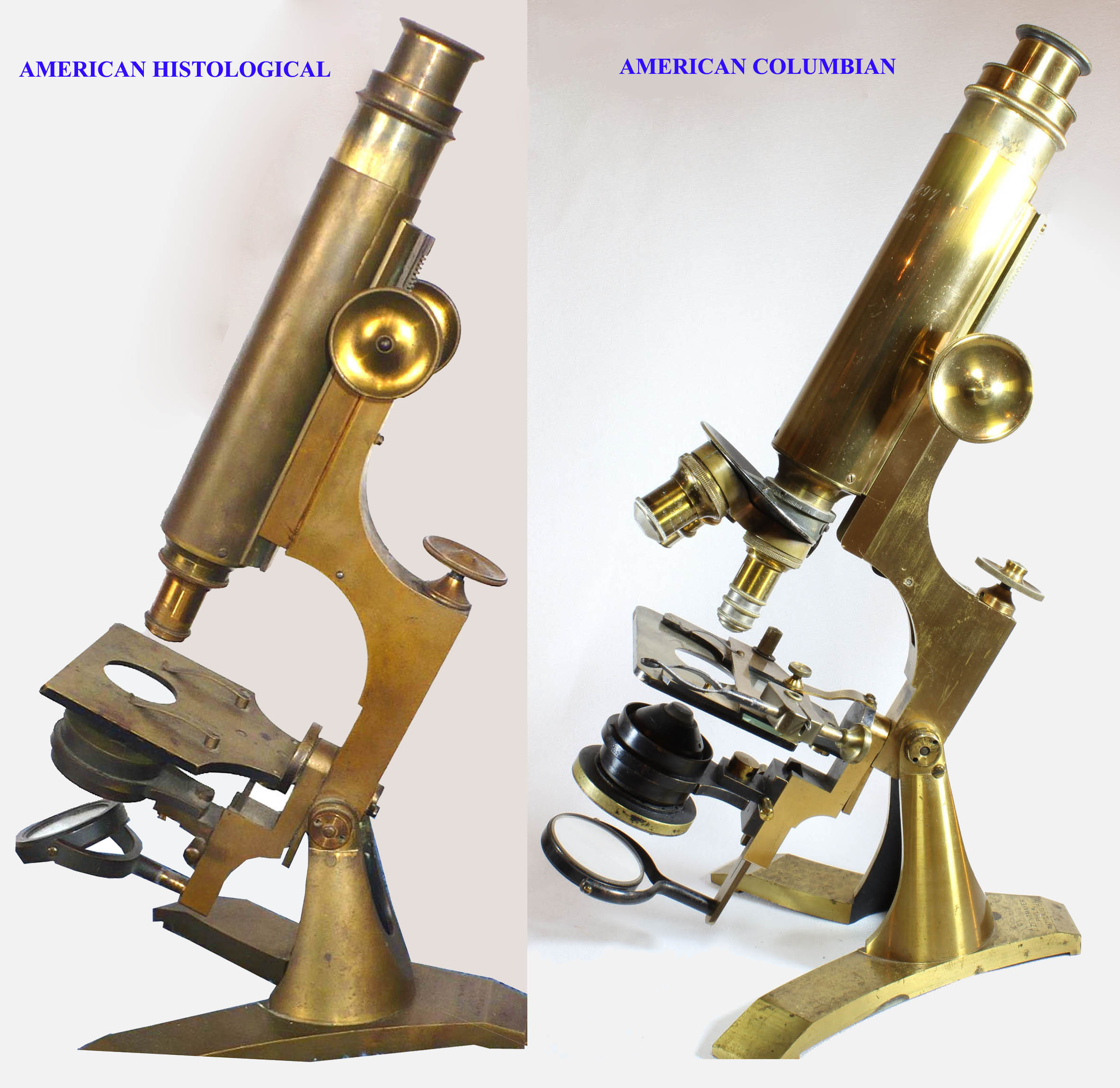
The purpose of the prize for B. Kohn remains a mystery, at least for the moment, as neither a reference to this prize or B. Kohn has yet been found. Of course I would welcome any additional information on B Kohn, and his or her prize.


